Tasman: A View through Pinterest Images
Pinterest is a wealth of information collection by millions of people with a million different interests. Fortunately some pinners have an interest in topics related to elements I address in Tasman-An Innocent Convict’s Struggle for Freedom.
Here are a few images I found related to London in the 1850s. I hope you will keep a copy of these and future Pinterest images I post to enhance your reading of Tasman.
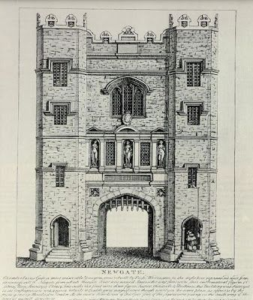 Newgate Prison housed the worst of the worst criminals sent there for murder, theft and such. It was “a labyrinth of dark cells, subterranean corridors and iron bars as thick as a navy’s wrist” (The Fatal Shore by Robert Hughes p. 36).
Newgate Prison housed the worst of the worst criminals sent there for murder, theft and such. It was “a labyrinth of dark cells, subterranean corridors and iron bars as thick as a navy’s wrist” (The Fatal Shore by Robert Hughes p. 36).
A wealthy person could ‘buy’ entry for a crime committed against them when they wanted to assure a severe sentence would be handed down from Old Bailey, the court adjoining the prison. Severe sentences included hanging (going to Tyburn Fair) and transport/deportation to one of many British prisons halfway around the world. Riff-raff might end up in Macquarie Harbor, Norfolk Island, Maria Island, Port Arthur, or other smaller colonies where they’d be sentenced to years of hard labor with return to England rarely possible.
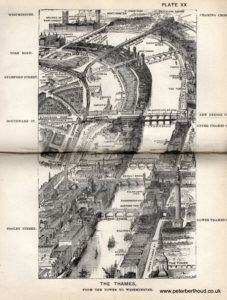 The Thames River rolls through the London area on its way to the English Channel. Its been a major shipping center for centuries. Goods from around the world arrived here daily. Convict ships sailed from here, halfway around the world, to various prison colonies in the South Pacific including Tasmania, a British protectorate southeast of Australia.
The Thames River rolls through the London area on its way to the English Channel. Its been a major shipping center for centuries. Goods from around the world arrived here daily. Convict ships sailed from here, halfway around the world, to various prison colonies in the South Pacific including Tasmania, a British protectorate southeast of Australia.
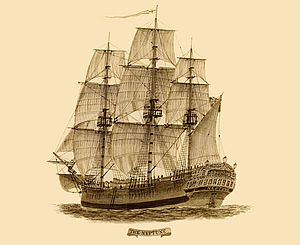 The British often used decommissioned ships as floating prisons they called hulks. They cut down the masts and left the ships in the harbor, then peopled them with convicts who were housed there overnight. Daylight hours the convicts were sent ashore to work for The Crown. Ladies and gentlemen often travelled to watch the convicts. They’d throw crusts of bread and unwanted food from their picnic meals at them and watch them fight over the tidbits. They may have wagered on individuals to make their visit more ‘entertaining.’
The British often used decommissioned ships as floating prisons they called hulks. They cut down the masts and left the ships in the harbor, then peopled them with convicts who were housed there overnight. Daylight hours the convicts were sent ashore to work for The Crown. Ladies and gentlemen often travelled to watch the convicts. They’d throw crusts of bread and unwanted food from their picnic meals at them and watch them fight over the tidbits. They may have wagered on individuals to make their visit more ‘entertaining.’
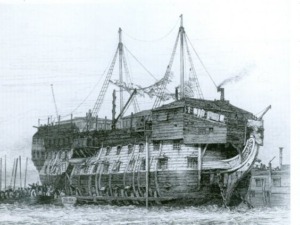
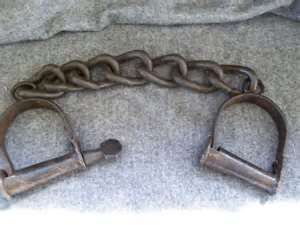 The men were guarded by soldiers and remained shackled as they worked, slowing their progress. The irons dug into their skin leaving raw spots which often became permanent scars. The only saving grace of being sent to the hulks: friends and family could see their relatives and thus knew they were still alive if not well.
The men were guarded by soldiers and remained shackled as they worked, slowing their progress. The irons dug into their skin leaving raw spots which often became permanent scars. The only saving grace of being sent to the hulks: friends and family could see their relatives and thus knew they were still alive if not well.



Recent Comments